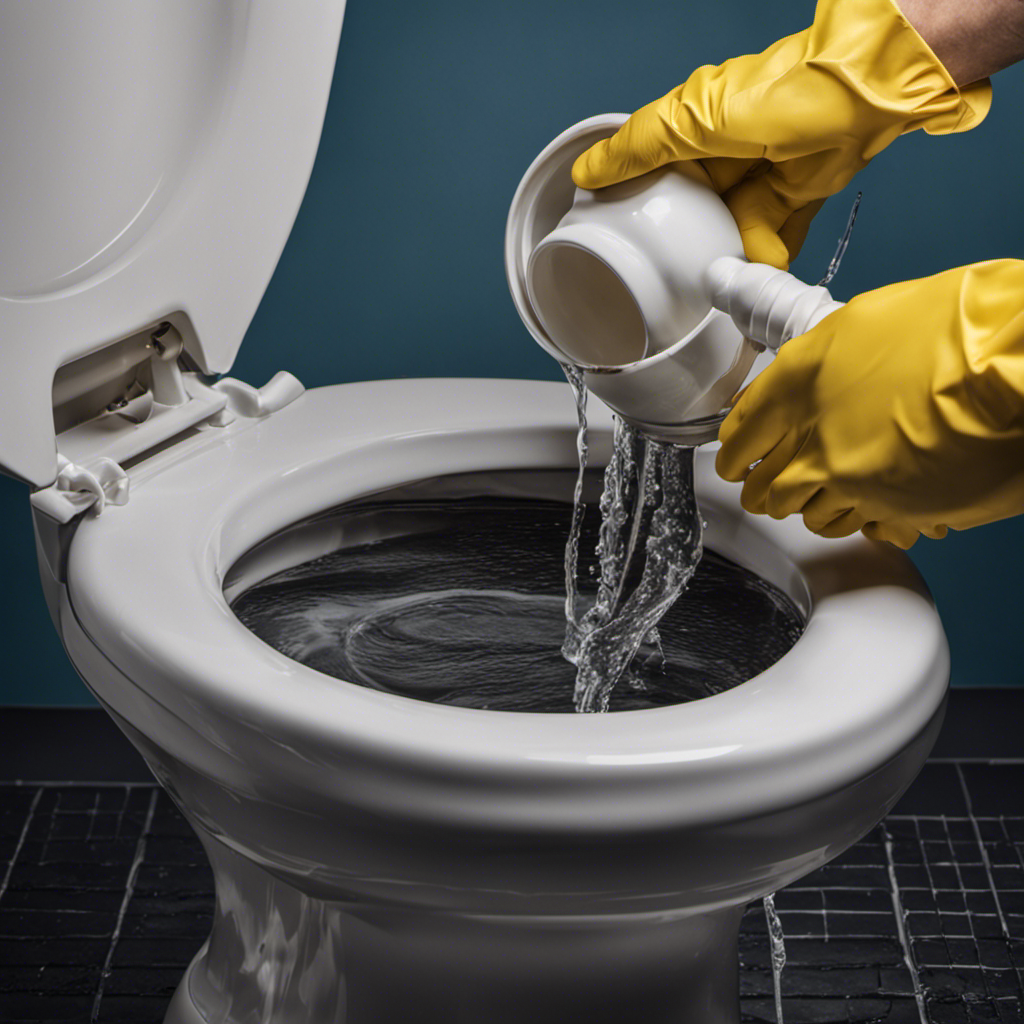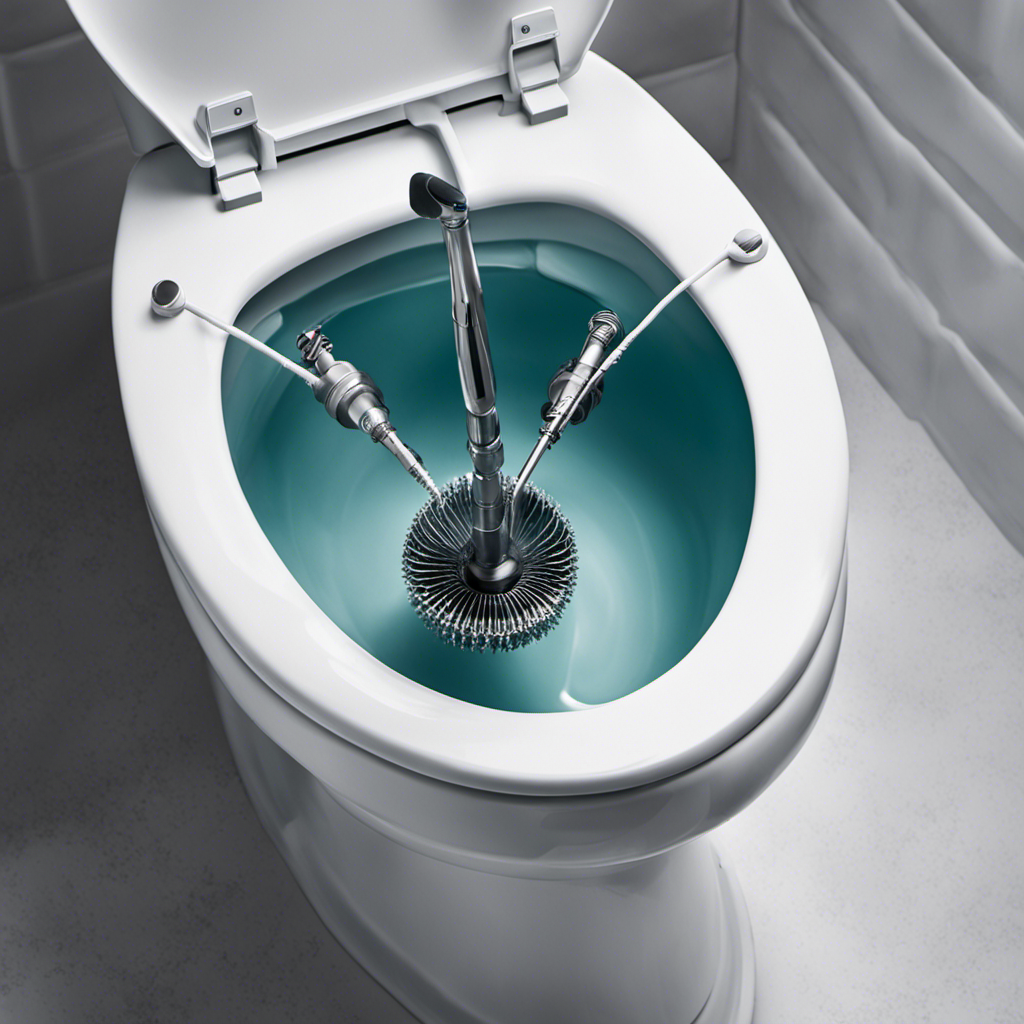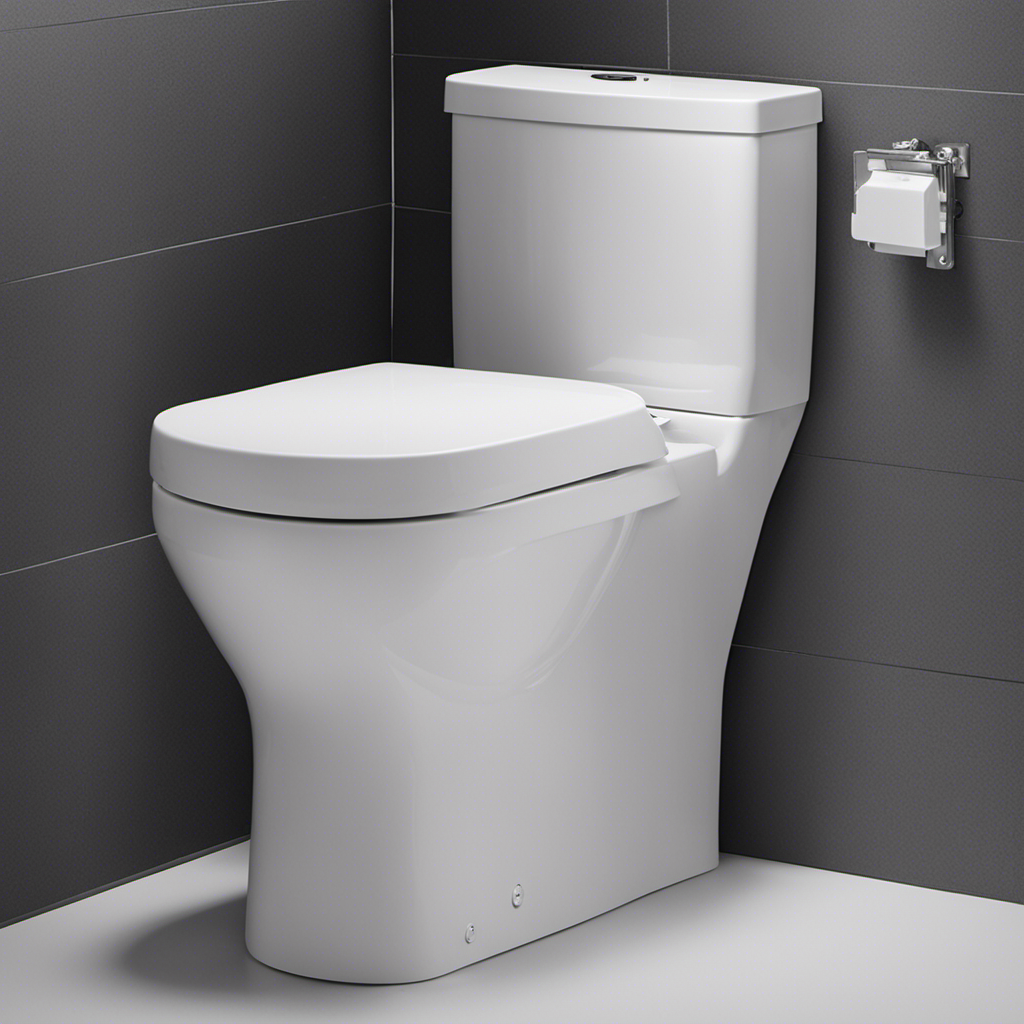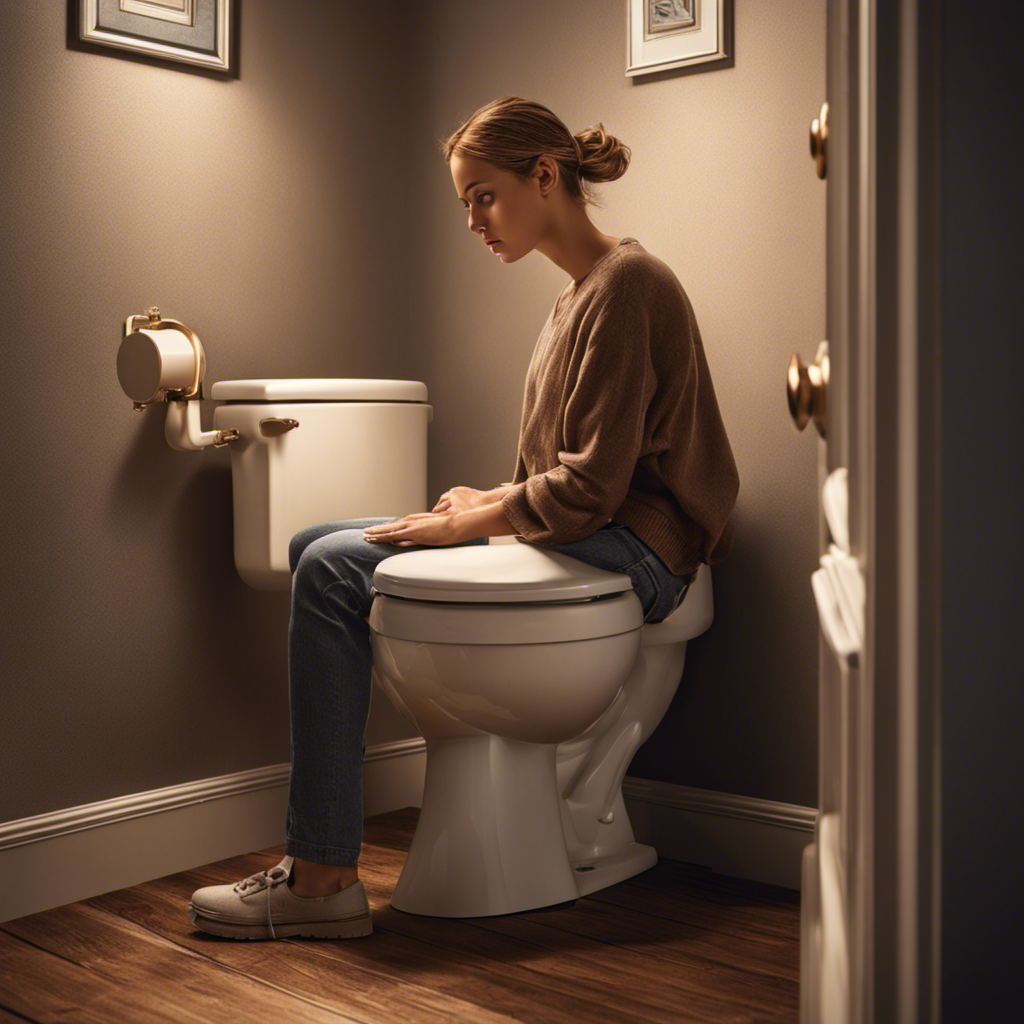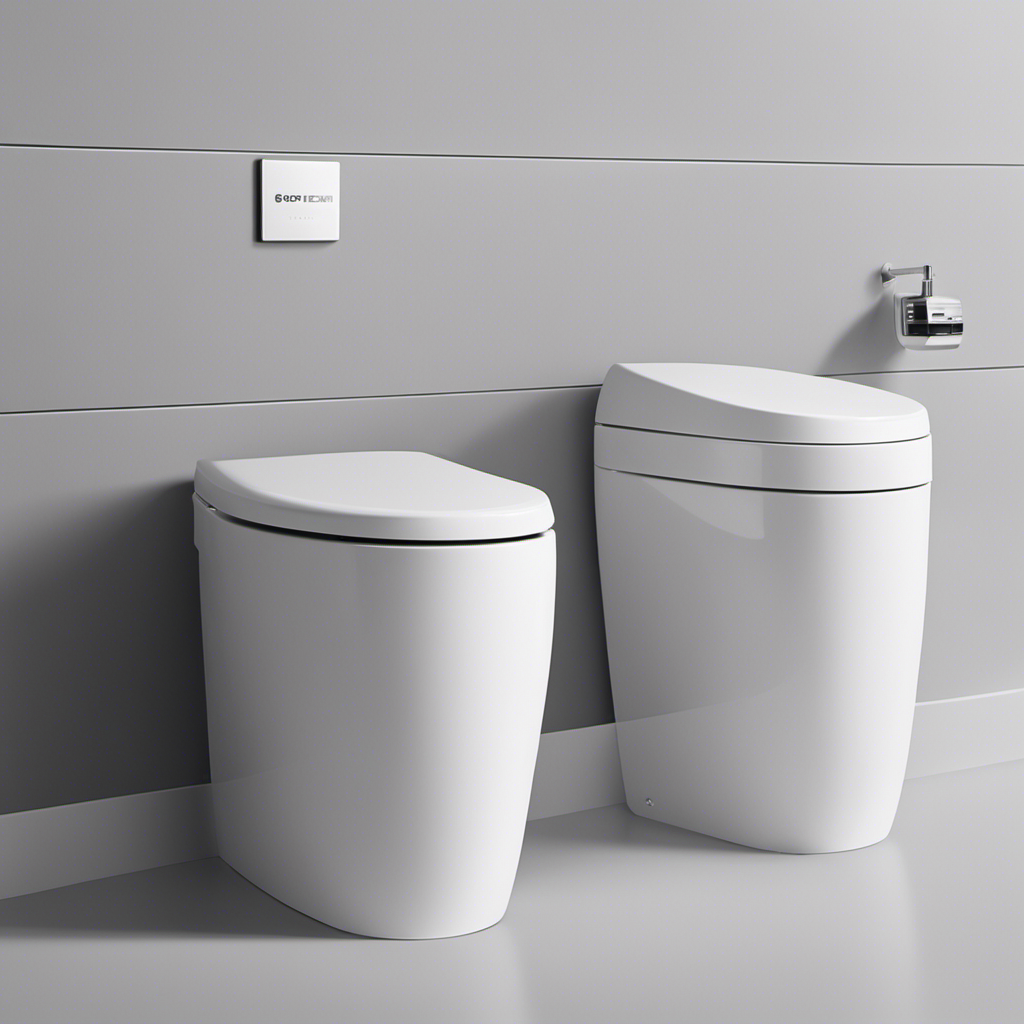As I stand in my bathroom, staring at the overflowing toilet, panic starts to set in. But fear not! With a little know-how and the right tools, unclogging a toilet at home can be a breeze.
In this article, I will guide you through the step-by-step process of plunging a clogged toilet, as well as provide alternative methods and preventive measures to avoid future clogs.
So, roll up your sleeves and let’s get to work!
Key Takeaways
- Buildup of toilet paper or debris in the drain pipe can cause toilet clogs, so it’s important to be mindful of how much toilet paper is being flushed.
- Flushing items that shouldn’t be flushed, such as feminine hygiene products or wipes, can lead to clogs and should be avoided.
- Accidentally flushing foreign objects down the toilet can cause clogs, so it’s important to be cautious and only flush appropriate items.
- Preventing future clogs is crucial, and can be done by practicing mindful flushing, avoiding flushing non-flushable items, and considering eco-friendly alternatives like bidets or wet wipes.
Understanding the Common Causes of Toilet Clogs
You might be wondering what could be causing your toilet to clog in the first place. Well, there are a few common signs that can help you identify the potential solutions to this problem.
One of the most common causes of toilet clogs is a buildup of toilet paper or other debris in the drain pipe. This can happen if you use too much toilet paper or flush items that shouldn’t be flushed, like feminine hygiene products or wipes.
Another common cause is a foreign object, such as a toy or a small object, accidentally flushed down the toilet.
To unclog your toilet, you will need some essential tools and supplies, which we will discuss in the next section.
Essential Tools and Supplies for Unclogging a Toilet
Make sure you have all the necessary tools and supplies for the job, such as a plunger and a bucket.
When it comes to unclogging a toilet, having the right equipment is key. With the right tools, you can effectively tackle even the toughest clogs. A plunger is an essential tool for any DIY plumbing solution. It creates pressure and suction to dislodge the blockage and restore the flow of water. Additionally, a bucket is useful for collecting excess water and preventing any mess.
These toilet unclogging techniques are simple yet effective, allowing you to handle minor plumbing issues without the need for professional help.
Now that you have your tools ready, let’s dive into a step-by-step guide to plunging a clogged toilet.
Step-by-Step Guide to Plunging a Clogged Toilet
Using a plunger is an effective way to restore water flow in a clogged toilet. When faced with a stubborn clog, there are a few toilet unclogging tips that can help troubleshoot the issue. Here are three sub-lists to evoke emotion in the audience while providing precise information:
-
Safety first: Protect your hands by wearing gloves and make sure the bathroom is well-ventilated to avoid inhaling any unpleasant odors.
-
Persistence pays off: Use a plunger with a flange, as it creates a better seal for more effective plunging. Apply firm and consistent pressure to create a vacuum and dislodge the clog.
-
Prevention is key: Avoid flushing excessive toilet paper or disposing of non-flushable items down the toilet to prevent future clogs.
Alternative Methods to Unclog a Toilet Without a Plunger
If a plunger is not available, there are other methods that can be used to clear a clogged toilet. While a plunger is the most effective tool, natural home remedies can also be used as an alternative.
One method is using hot water and dish soap. Start by heating a pot of water until it is hot, but not boiling. Then, pour a few tablespoons of dish soap into the toilet bowl. Carefully pour the hot water into the bowl, aiming for the drain. Let it sit for a few minutes before attempting to flush. The combination of heat and soap can help break up the clog.
However, it’s important to remember that preventive measures to avoid future toilet clogs are crucial.
Preventive Measures to Avoid Future Toilet Clogs
To prevent future clogs, you should be mindful of what you flush down the toilet. Here are some toilet maintenance tips and eco-friendly solutions for preventing toilet clogs:
-
Use toilet paper sparingly: Excessive toilet paper can lead to blockages. Use only what is necessary to avoid clogging the pipes.
-
Avoid flushing non-flushable items: Items like wet wipes, sanitary products, and paper towels should never be flushed down the toilet as they can cause major clogs.
-
Consider using a bidet or wet wipes: Bidets and wet wipes are more eco-friendly alternatives to excessive toilet paper usage. They can help reduce the risk of clogs while also being gentle on the environment.
Frequently Asked Questions
Can I Use Chemical Drain Cleaners to Unclog a Toilet?
I wouldn’t recommend using chemical drain cleaners to unclog a toilet. There are alternative methods that are safer and more effective. Chemicals can damage pipes and harm the environment.
How Long Does It Typically Take to Unclog a Toilet Using the Plunging Method?
It usually takes just a few minutes to unclog a toilet using the plunging method. The key is to create a strong seal with the plunger and use quick, forceful thrusts to dislodge the blockage.
Are There Any Home Remedies That Can Be Used to Unclog a Toilet?
Yes, there are home remedies and natural solutions that can be used to unclog a toilet. Some effective methods include using a mixture of baking soda and vinegar, hot water, or a toilet auger.
What Should I Do if the Toilet Is Still Clogged After Using a Plunger?
If the toilet is still clogged after using a plunger, I would recommend trying a toilet auger. If that doesn’t work, it might be best to call a professional plumber for assistance.
Is It Necessary to Call a Professional Plumber if None of the Unclogging Methods Work?
If none of the unclogging methods work, it may be necessary to call a professional plumber. However, before doing so, consider alternative solutions to unclog the toilet without using a plunger. Look out for signs indicating a more serious plumbing issue.
Conclusion
In conclusion, unclogging a toilet at home is a common issue that can be easily resolved with the right tools and techniques. By understanding the common causes of toilet clogs and taking preventive measures, we can avoid future plumbing emergencies.
Whether using a plunger or alternative methods, such as hot water or a toilet auger, it is important to act promptly and confidently. Remember, a clogged toilet is not the end of the world; it is simply a minor inconvenience that can be quickly fixed with a little know-how and a dash of determination.
